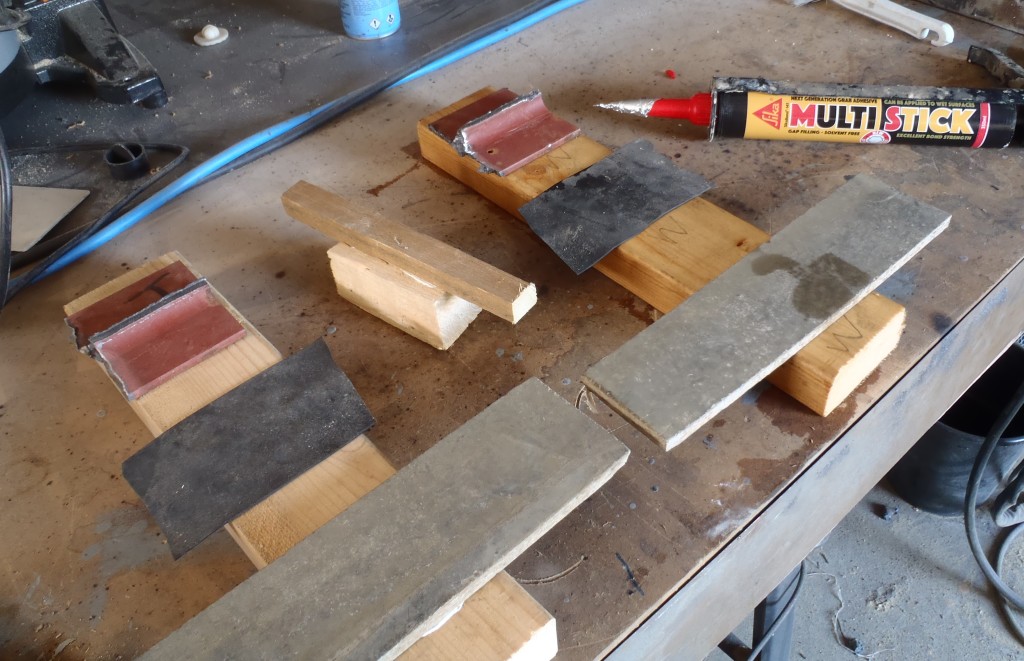This morning, after tidying up the workshop, we decided to test our new glue to see how good it is in wet conditions. We can easily envisioned situations where we were having wet weather during or after placement of the wall legs or roof rafters but before we got the cement boards on and our timber is damp from the rain, delaying our progress!
But the building industry has come up with this fabulous alternative to the other common glues like PVA and polyurethane. It is based on Modified Silane (MS) Polymer glue, invented in Japan in the 1980’s! It is very flexible, very strong, sticks to almost anything, Sunshine proof and works in very damp conditions as it uses moisture for its curing process. For further technical info, visit www.adhesiveandglue.com/modified-silane.html
In our case, we are bonding cement boards to the outer walls and on the roof rafters in one job, then we have planks of timber to be bonded to the steel I beams and finally, the Sky Light frames will have the glazing rubber seals bonded to the wooden support bars.
So we got two small pieces of CLS timber, one was dunked in water and the other kept dry for comparison. Then, we gathered two sets of the three materials (cement board, painted steel I beam and rubber) we are testing and then squirted a blob of glue and stuck down each test piece, making sure it was spread thinly and pressed firmly together.
Another advantage of these glues, especially the modern ones, is that they are very high grab so as soon as you press the joint together, they will hold firmly. We did notice that this is the case but the materials were able to slide about fairly easily so useful for the final alignment.
Now we wait for the curing process which will be quite quick but it did warn us that it is an outside inwards curing process which means that the most deepest parts of the bond may take a while longer to finish curing, but still only about 2 to 6 hours.

